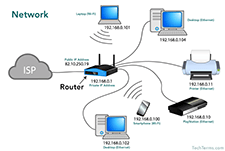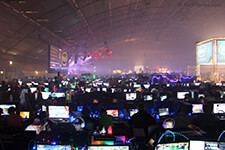Network
A network consists of multiple devices that communicate with one another. It can be as small as two computers or as large as billions of devices. While a traditional network is comprised of desktop computers, modern networks may include laptops, tablets, smartphones, televisions, gaming consoles, smart appliances, and other electronics.
Many types of networks exist, but they fall under two primary categories: LANs and WANs.
LAN (Local Area Network)
A local area network is limited to a specific area, such as a home, office, or campus. A home network may have a single router that offers both wired and wireless connections. For example, a computer may connect to the router via Ethernet, while smartphones and tablets connect to the router via Wi-Fi. All devices connected to the router share the same network and often the same Internet connection.
A larger network, such as the network of an educational institution, may be comprised of many switches, hubs, and Ethernet cables. It may also include multiple wireless access points and wireless repeaters that provide wireless access to the network. While this type of network is much more complex than a home network, it is still considered a LAN since it is limited to a specific location.
WAN (Wide Area Network)
A wide area network is not limited to a single area, but spans multiple locations. WANs are often comprised of multiple LANs that are connected over the Internet. A company WAN, for example, may extend from the headquarters to other offices around the world. Access to WANs may be limited using authentication, firewalls, and other security measures. The Internet itself is the largest WAN since it encompasses all locations connected to the Internet.
 Test Your Knowledge
Test Your Knowledge
